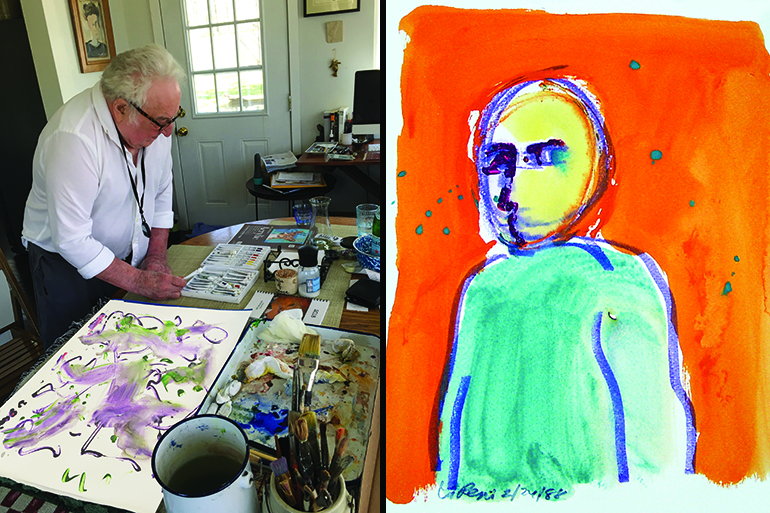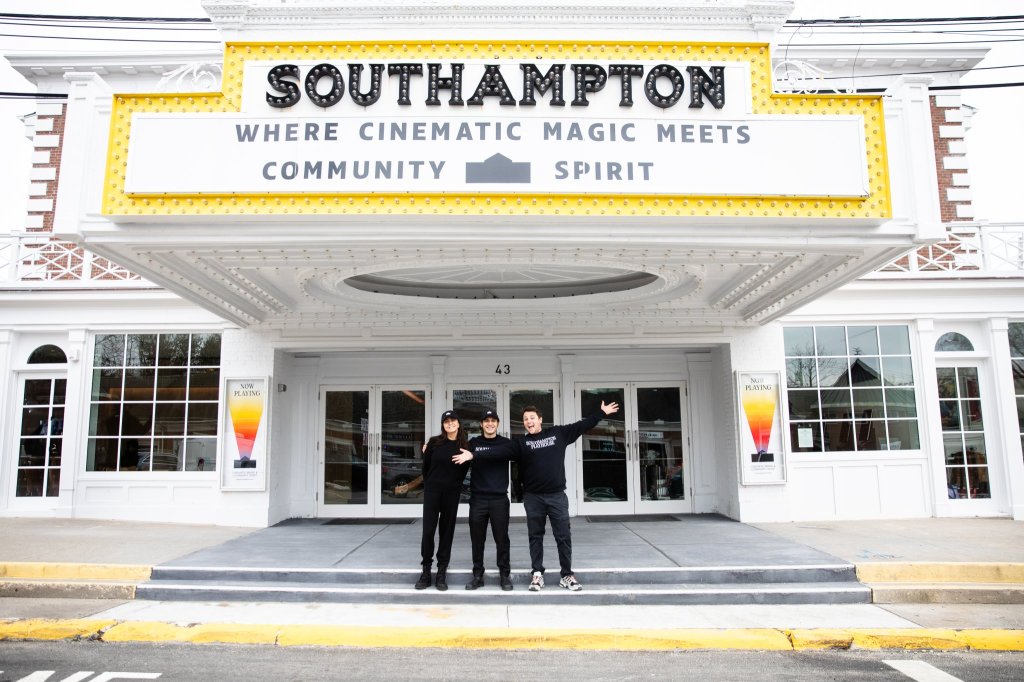Vincent Pepi Exhibition “Eclectic Reflections” on View at ArtRemsenburg

The artworks are mostly untitled, often identified by number only. But Vincent Pepi’s expansive and wildly diverse output is anything but by-the-numbers. Usually brimming with eye-popping colors, Pepi’s paintings, watercolors, and drawings are the manifestation of what he calls a “musical approach” to visual art.
“I work with energy and emotion, getting it spontaneously onto the canvas,” Pepi says, comparing his methods to jazz improvisation. And he’s gotten a lot of energy and emotion onto canvas in his 92 years—his output numbers close to 1,400 pieces, and reflects a wide range of emotional states.
Eclectic Reflections, an exhibition of Pepi’s work, opens this weekend at the Remsenburg Academy, with an artist’s reception taking place on Saturday, August 4 from 5–8 pm. The galleries will showcase work from across Pepi’s seven decades as an active artist, including some pieces completed in the last few months.

“I’ve always been very prolific,” says Pepi. “I tend to paint one after another—I work under a self-imposed pressure.” Like a jazz musician taking repeated, spontaneous passes over the same chord progression, Pepi often produces multiple takes of a basic idea in a single sitting. Images recur—Pepi has a penchant for painting heads, for example—but the moods are altered depending on color and density. And just as happens in jazz, the brightness and wideness of Pepi’s palette lightens what might otherwise seem like a strangely obsessive narrowness of subject.
Pepi, who has works in the collections of the Smithsonian American Art Museum, the San Francisco Museum of Modern Art, and the Heckscher Museum of Art, among other places, is associated with the New York School of abstract expressionists who took the art world by storm in the early post-war years. Many of the artists of the New York School were drawn to the same techniques of spontaneity that Pepi is—it’s a mode that came to be called ‘action painting.’ Some of those artists associated with the New York School, most famously Jackson Pollock and Willem de Kooning, made their way out to the Hamptons, but Pepi knew them more from when they hung around in Greenwich Village.
“They liked to drink at the Cedar Tavern,” says Pepi, recalling drinking with them at that dive bar several times. “De Kooning was a very nice guy, and Franz Kline helped me quite a bit.” But Pepi did not follow the others out to the Hamptons at that time—in fact, he didn’t make his way East until 1999.
Perhaps that was because he had become a family man. “I went to Rome from ’49–’51, and returned with a wife.” Pepi and his wife, Teresa, started a family and Pepi, who had attended the elite High School of Music and Art in New York City and had apprenticed as a commercial artist, started a business as a commercial artist, working in graphic design. It was extremely successful. “I had constant work with designing,” says Pepi. “I loved being active in both fine art and commercial art.”

But in recent years, Pepi has been experiencing increased interest in his diverse fine art output. Large numbers of his works have been shown at the Quogue Gallery and at the Noted Gallery in Southampton, and have been snapped up by collectors. “I realized it would take time for my work to find its place,” says Pepi of the belated recognition, explaining that his varied output might have confused the public. “Early on, I wrote my own blurbs—tried to be more elaborate in explaining my work. But I decided I was not trying to create a manifesto. Ultimately, the paintings speak for themselves, and people will have their own answers to the questions.”
And this makes sense. After all, what’s the meaning of a John Coltrane solo? Not even Coltrane could explain it in words. Like a Coltrane solo, Vincent Pepi’s spontaneous, improvisatory art resists explanation—it’s indescribably beautiful.



